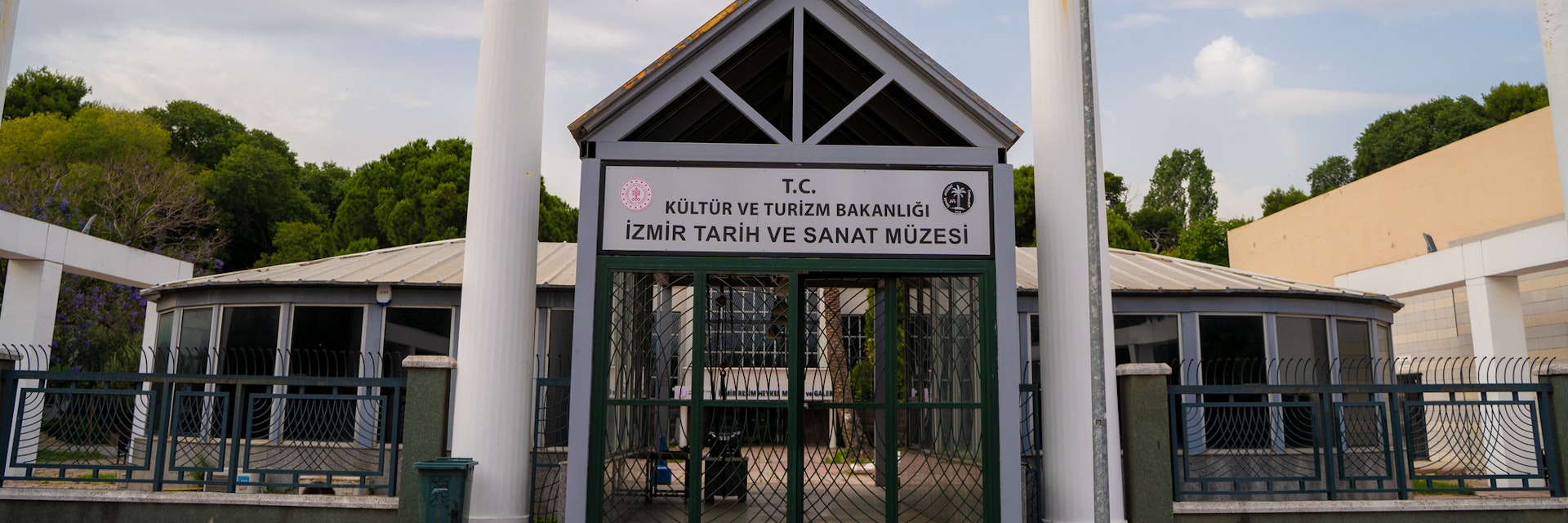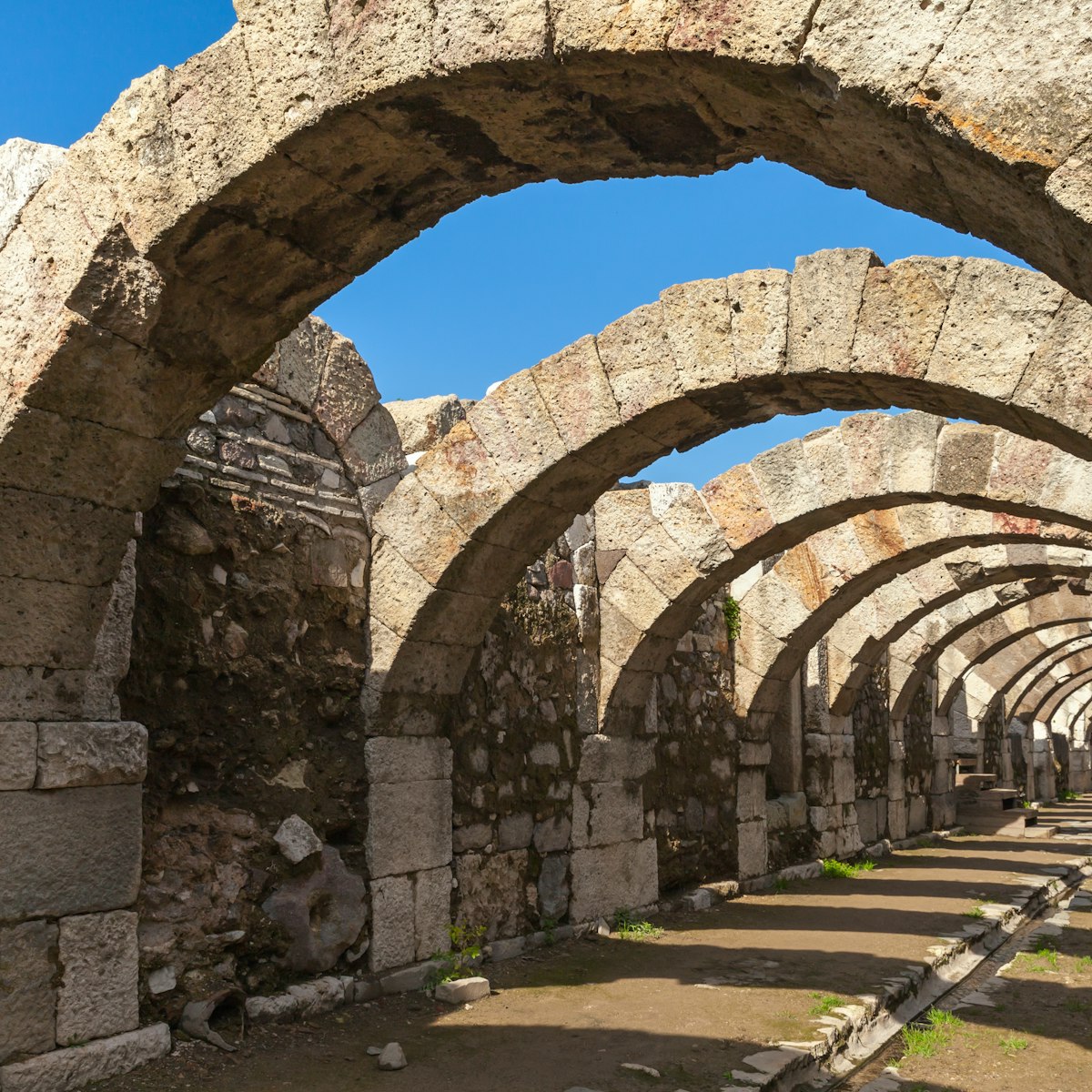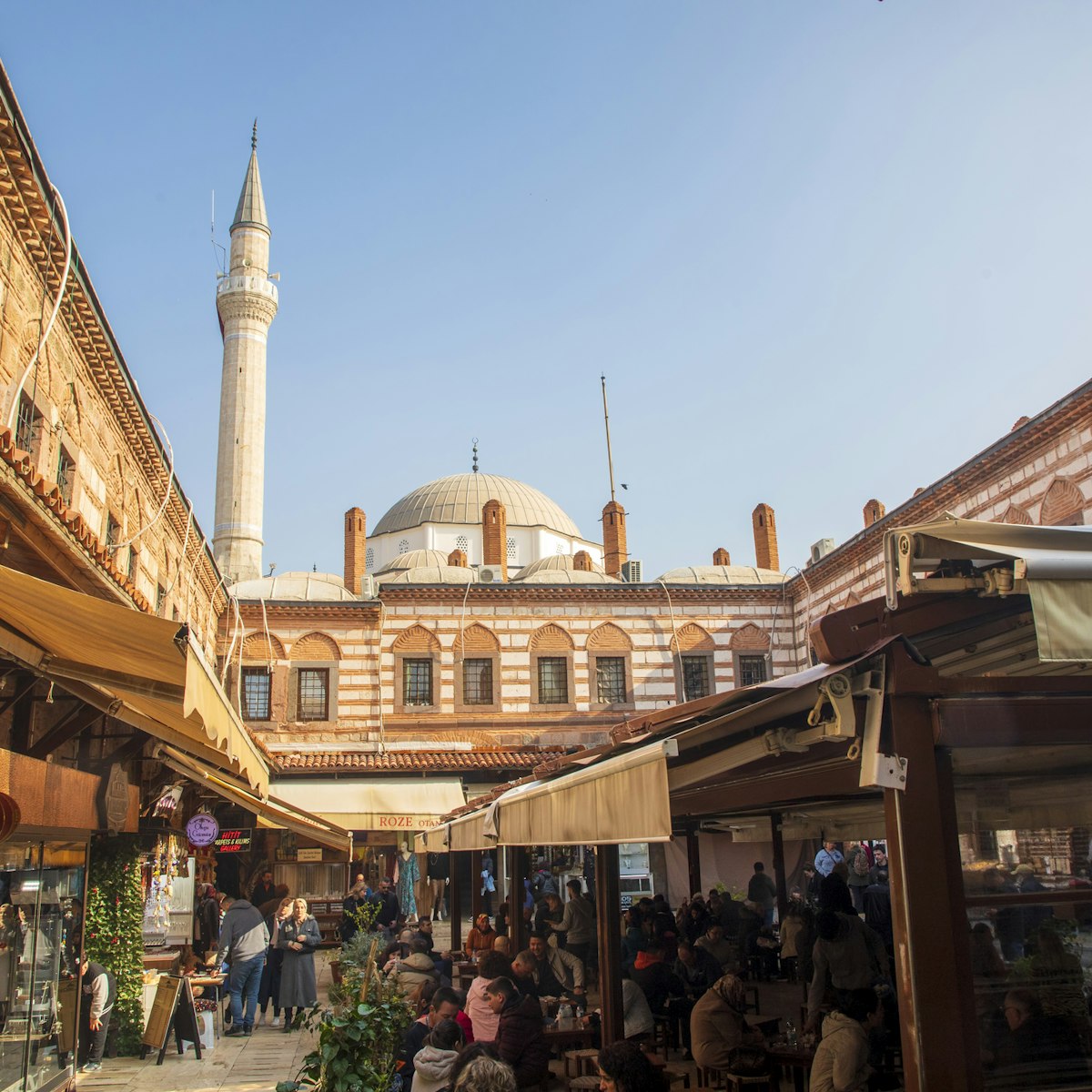This museum is overlooked by many visitors to the city, who do themselves a great disservice in the process. Spread over three pavilions, it is one of the richest repositories of ancient artefacts in the country and its Sculpture pavilion – crammed with masterpieces from ancient Smyrna, Teos, Miletos and Pergamon – is simply sensational. The Precious Objects and Ceramics pavilions contain jewellery, coins and pots, all displayed in a somewhat dated fashion but with informative labelling in English.
Highlights include the coin collection in the Precious Objects pavilion, which includes some of the coins minted at Sardis during the reign of King Croesus. These date from the very early 7th century BC and were made of electrum, an alloy of gold and silver with traces of other elements. The jewellery in this pavilion is also impressive.
The Sculpture pavilion is so full of treasures that it is hard to single out only a few. Don't miss the friezes from the Temple of Dionysos at Teos and from the theatres and other buildings at Miletos – the frieze from the theatre at Miletos is particularly stunning. Also upstairs and of particular note are the sculptural fragments from the Belevi Mausoleum near Ephesus, which date from the 3rd century BC.
Downstairs, look out for the Roman-era statue of the river god Kaistros from Ephesus (2nd century AD), the amazingly lifelike Hellenistic three-figure stele from Tralleis (Aydın) and the high reliefs of Demeter and Poseidon from İzmir's Agora.







